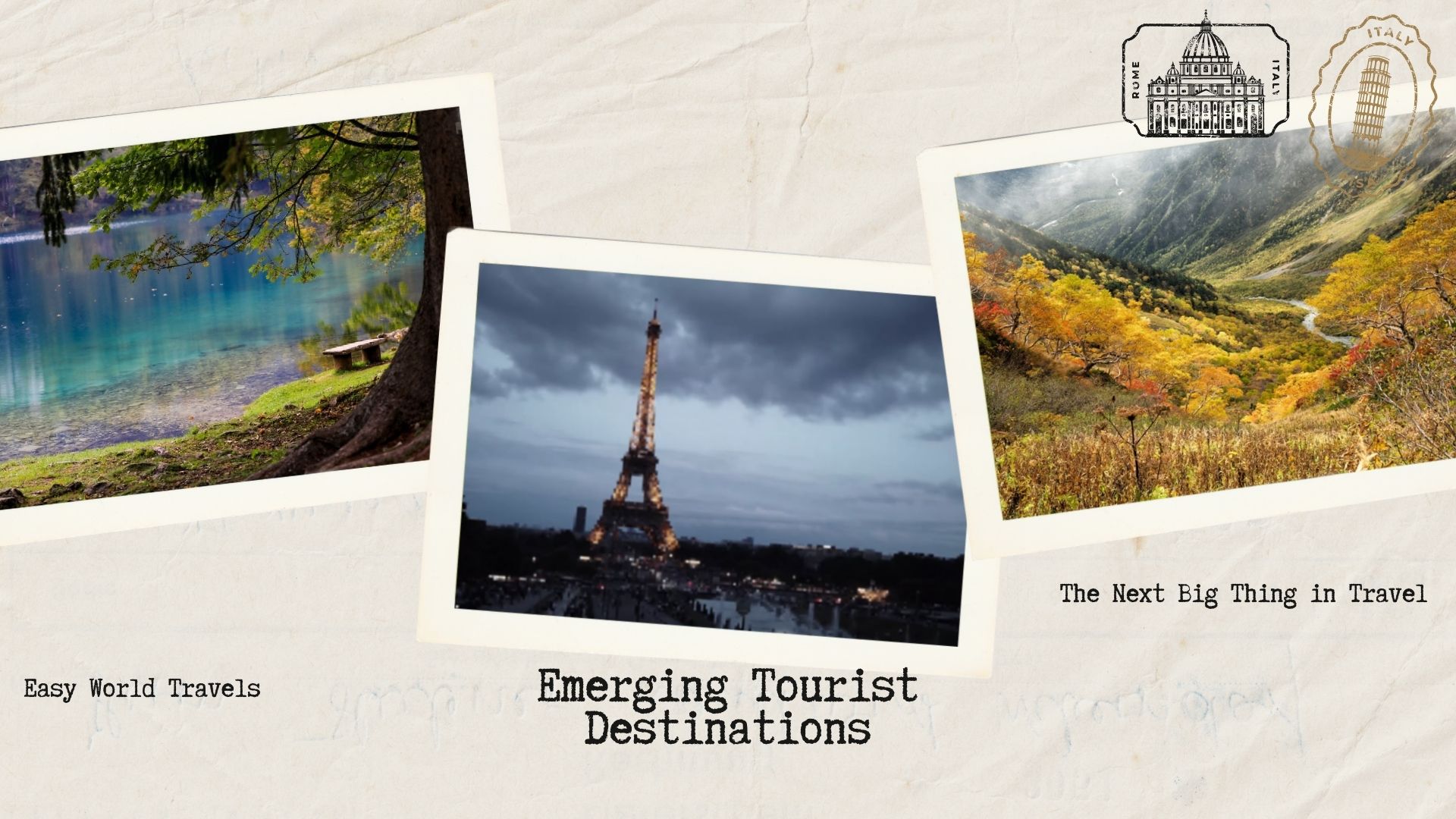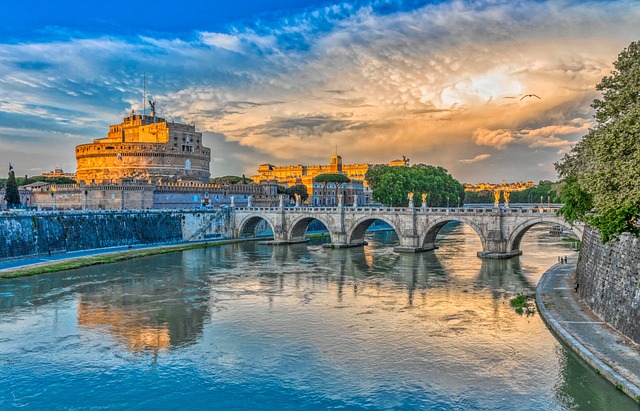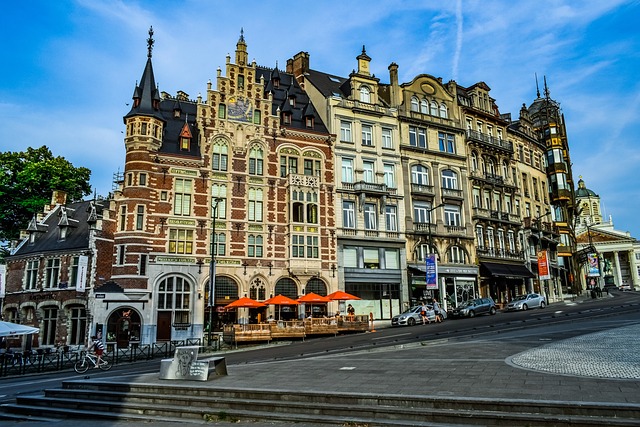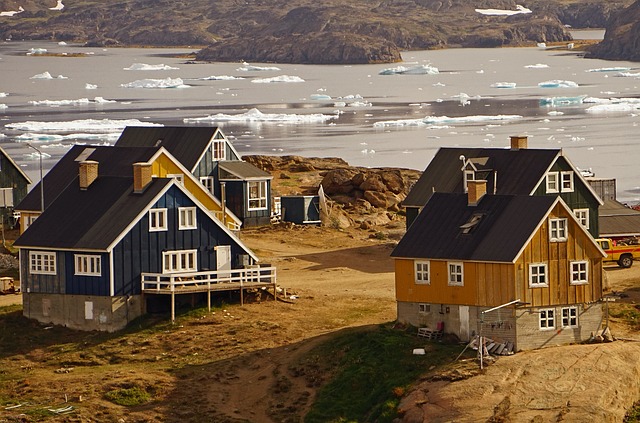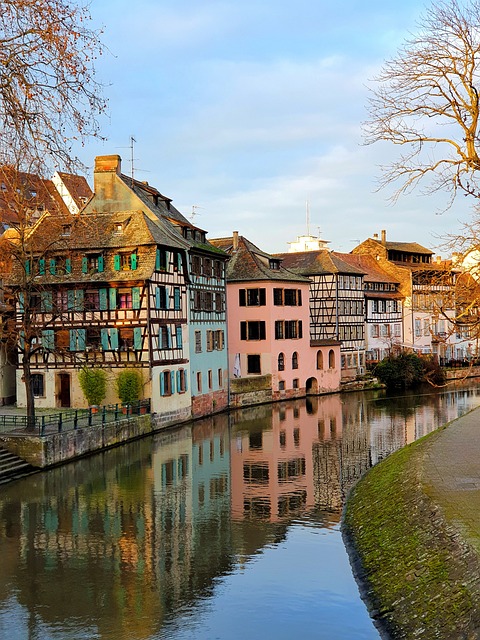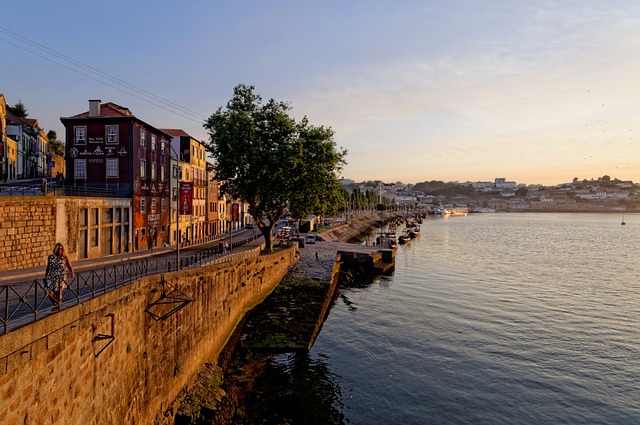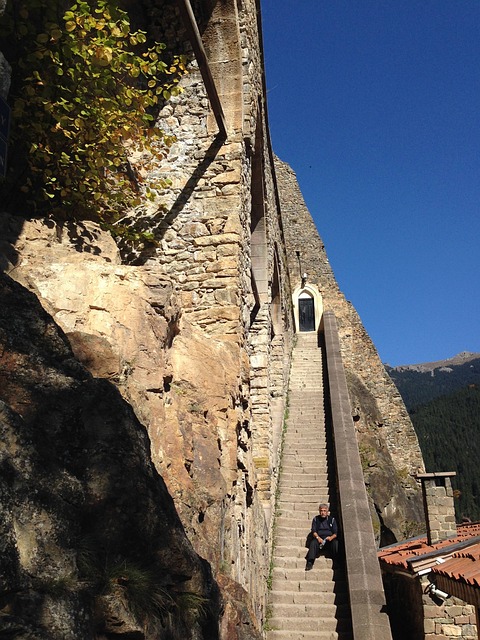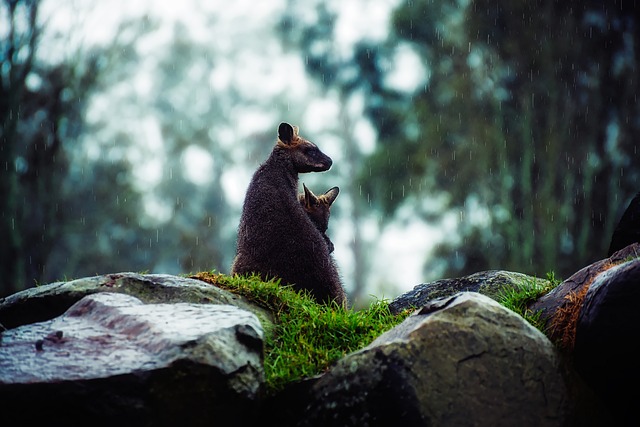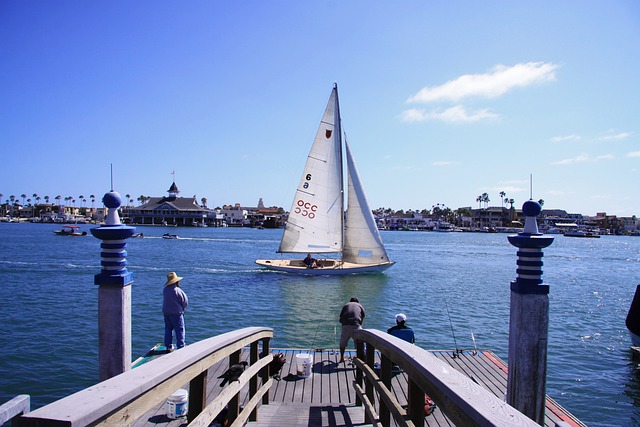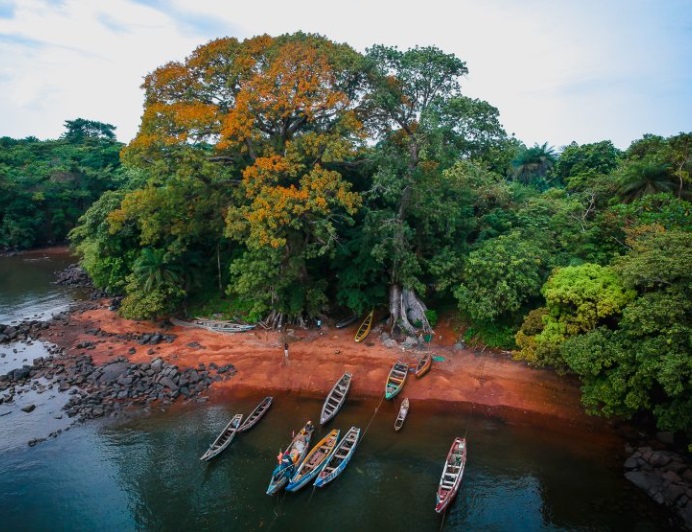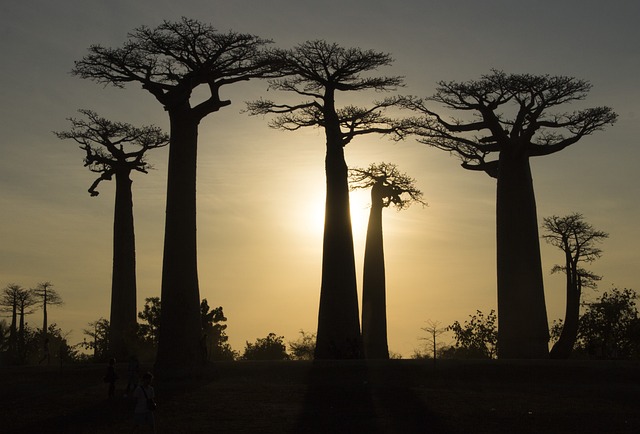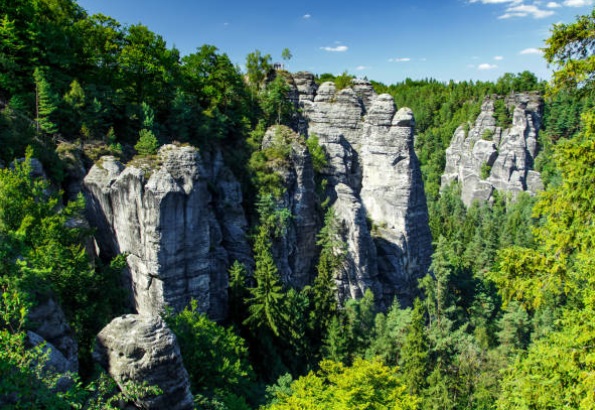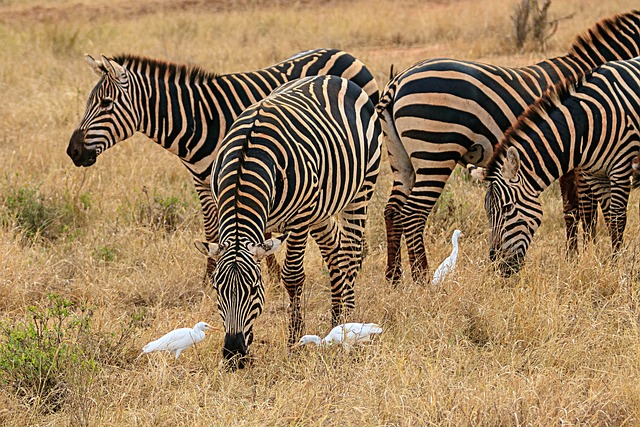Beyond the crowded beaches and tourist traps, there’s a world of yet-untapped wonders waiting to be discovered, ready to surprise the curious traveler. This year is about threading unfamiliar territories, exploring cultures before they even hit the mainstream, and diving into the unknown where the authentic and unexpected await.
In this article, we have also included not-so-unfamiliar but revitalized destinations that promise a more immersive experience, and are likely to draw tourists from all over.
Join us as we delve into the 22 emerging tourist destinations that will reshape the travel landscape of 2025.
Key Takeaways:
- Despite the ongoing financial challenges, international travel remains in demand.
- Year-round travel is on the rise, with a focus on exploring off-the-beaten-path destinations like remote villages, secluded islands, and hidden mountain retreats.
- Places that blend ancient traditions with modern influences are becoming popular, offering visitors a meaningful connection to local life.
- Technology is redefining the way we explore new destinations. Smart travel apps, virtual guides, and immersive experiences powered by augmented reality (AR) are enhancing the overall travel journey.
- Improved connectivity is making the once-remote locations more accessible, inviting a broader audience to discover the charm of these hidden gems.
Unveiling the Charm of Emerging Tourist Destinations 2025
As we embark on this journey, it becomes clear that 2024 is a year of redefining travel norms. Embrace the spirit of discovery, immerse yourself in diverse cultures, and witness the beauty of destinations yet to be fully unveiled.
1. Tartu, Estonia

Tartu, the “intellectual capital” of Estonia, is home to the University of Tartu, the country’s oldest university (founded in 1632). Tartu’s medieval town hall square, Raekoja Square will transport you back in time with its charming Town Hall and bustling cafes.
The imposing ruins of the 13th-century Tartu Cathedral was once a major religious center. It’s now a stunning historical landmark.
The Estonian National Museum features interactive exhibits, multimedia presentations, contemporary art exhibits, and architectural marvels like the glass roof overlooking the city.
The AHHAA Science Centre offers exhibits about robotics, human biology, natural phenomena, space exploration, and more.
The “Kissing Students” sculpture and fountain was created by Mati Karmin in 1998. Located in front of Tartu town hall square, the sculpture symbolizes openness, humanity, and respect. It’s a popular spot for taking photos.
The first national song festival, first professional theatre, and first national newspapers all originated in Tartu, solidifying its role as the cradle of Estonian culture.
Tartu is a green space advocate. It’s been working on constructing new routes – bike lanes and pedestrian tracks to promote sustainable transportation and improve safety for cyclists. Its extensive parks like the Toomemägi Park and the Botanical Garden offer peaceful escapes and stunning nature walks.
2. Slovenia
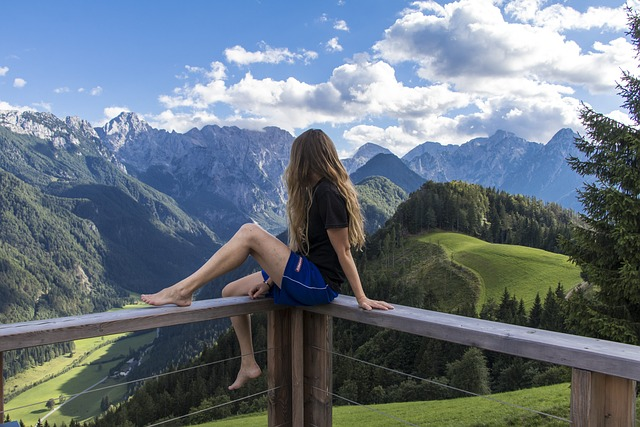
Slovenia is a small country on the Adriatic coast, in central Europe. The country is home to 59 major rivers, and streams, 321 classified as lakes, and other water sources. And some of the best ski resorts.
Its terrain consists largely of karstic plateaus, ridges, and magnificently precipitous Alpine peaks, offering diverse outdoor activities.
It also has a rich history that can be best experienced in its preserved old town centers, and the country’s capital, Ljubljana, was awarded Europe’s Greenest Capital in 2016. Slovenia is also known for its vineyards, with a vineyard for every 70 people throughout the country.
Slovenia’s Adriatic coastline is a charming stretch of land known as the Slovenian Riviera. It sits within the Istrian peninsula, with Italy and Croatia as its neighbors. While it’s only about 29 miles, the coastline is teeming in beauty and historical significance.
- Koper is the largest and oldest town, with a Venetian-influenced historic center and a bustling port.
- Izola is a picturesque fishing village with a vibrant harbor and a relaxed atmosphere.
- Piran is a jewel on the coast, boasting stunning Venetian architecture, charming squares, and breathtaking sea views.
Slovenia’s only national park was established in 1981. Triglav National Park is named after Mount Triglav, the highest peak in the Julian Alps and a national symbol of Slovenia.
- The 340 square miles park includes the majestic Triglav, Mangart, and Jalovec peaks.
- The valleys of Vintgar Gorge and Radovna offer lush greenery, cascading waterfalls, and charming trails.
- Glacially sculpted lakes like Bled and Bohinj are known for their stunning beauty and recreational opportunities.
- Dense forests teeming with wildlife cover much of the park, providing opportunities for wildlife watching and serene nature walks.
Triglav National Park is a paradise for outdoor enthusiasts, with activities like hiking, cycling, mountaineering, kayaking, and skiing available throughout the year.
3. Pompeii, Italy

Pompeii is a place unlike any other. It was covered in ash and pumice when Mount Vesuvius erupted in 79 AD, essentially “freezing” the city in time. Buildings, roads, and even human remains were remarkably preserved, offering an unparalleled glimpse into daily life of the Italians in Roman times.
Pompeii’s tragic fate turned it into one of the most important archaeological sites in the world, a unique archaeological wonder that it’s now a Unesco world heritage site. Ongoing excavations and research continuously unveil new discoveries, deepening our understanding of Roman civilization.
Walking through Pompeii’s streets is like stepping back in time. From public baths and theaters to bakeries and brothels, you can explore the city’s layout, architecture, and social structures, understanding how a Roman city actually functioned.
Pompeii holds chilling reminders of the disaster. Casts of victims caught in the eruption offer a tragic reminder of the event’s human cost.
The city was rediscovered in the 16th century, after being buried for almost 1700 years. Beyond the ruins, nearby museums showcase artifacts and exhibitions. Mount Vesuvius itself offers breathtaking views. Pompeii ignites curiosity, shows how fleeting life is, and how resilient humans can be.
4. The Wild Atlantic Way, Ireland
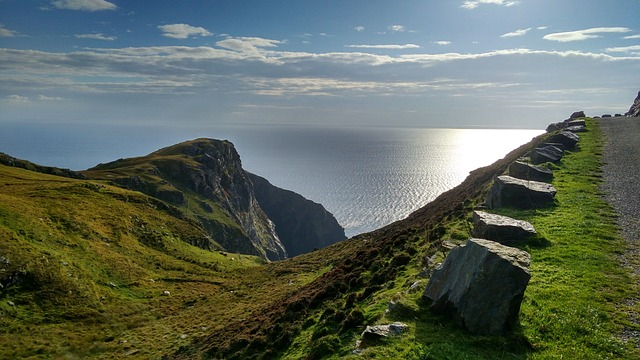
The Wild Atlantic Way is a 2,500 km tourism trail and driving route along the west coast of Ireland. It passes through nine counties and three provinces, and is known for its natural beauty – stunning coastal landscapes, remote villages, and many attractions, including the:
•The Cliffs of Moher are a series of sea cliffs in County Clare. It’s a birdwatching haven that’s home to countless seabirds, puffins, guillemots, razorbills, etc.
•Mizen Head is one of Ireland’s off grid destinations located in its most south westerly point. Mizen Head’s cliffs offer stunning views of the Atlantic Ocean. The rugged coastline is home to some playful seals that bask on the rocks.
•The Skellig Islands served as the filming location for Luke Skywalker’s hideout in Star Wars (The Force Awakens and The Last Jedi) for their stunning views.
The Wild Atlantic Way is widely recognized for its role in promoting sustainable tourism and preserving the natural and cultural heritage of the region. It also offers various types of accommodation, including luxury hotels, self-catering cottages, and charming B&Bs.
5. Rome
Rome (aka the Eternal City) isn’t entirely “new”. But it’s experiencing a revitalized appeal this 2024. It’s back in full swing, welcoming travelers with relaxed regulations and openness, which attracts exploration.
In Euromonitor’s Top 100 City Destinations 2024, Rome is currently the 7th most visited city in the world, based on estimated international arrivals. It’s the most popular tourist destination in Italy. Its historic city center is a Unesco world heritage site, and its rich history and cultural heritage attract millions of visitors each year.
The historic city is considered the cradle of Western civilization and the center of the Catholic Church. Its history spans 28 centuries, and its rich cultural heritage and well-preserved architecture make it a popular destination for tourists.
The Trevi Fountain underwent a restoration that was completed in 2015, costing around $2.4 million. It was funded by the fashion house Fendi. Regular maintenance is ongoing to keep the tradition of tossing coins into the water. The introduction of LED lights has further added to the fountain’s allure.
The Colosseum Restoration Project (aka the Great Colosseum Project), is an ongoing initiative to preserve and restore this iconic landmark for future generations. As of January 2024, the project is nearing completion, with some areas already accessible to the public.
The annual Internazionali BNL d’Italia, first played in 1930 will be held on May 16-19, 2024 at the Foro Italico in Rome. It’s one of the most prestigious tennis tournaments in the world. It’s a popular event for players and fans alike, won by some of the greatest tennis players of all time, including Rafael Nadal, Novak Djokovic, and Roger Federer.
6. Brussels, Belgium
Brussels is home to numerous historic sites, landmarks, and museums. The Grand Place, Les Galeries Royales Saint-Hubert, and the Atomium. These attractions cater to a wide range of interests, from architecture and art to history and culture.
This European capital is famous for its Belgian waffles, Michelin-starred restaurants, innovative fusion cuisine, and trendy street food options that cater to diverse palates and budgets,
It’s close to several popular European cities like Paris, Rome, and Barcelona, making it an ideal starting point for exploring multiple destinations during a single trip.
The Manneken Pis is a small bronze fountain sculpture in central Brussels, depicting a naked little boy urinating into the fountain’s basin. It’s one of the most important landmarks in Brussels and is regularly dressed up in various costumes, with a schedule posted for the public to see.
The Atomium is a unique architectural and historical site that offers panoramic views of the city and houses various exhibits. Originally built for the 1958 Brussels World’s Fair, this landmark building is now a famous tourist attraction that houses a museum and a restaurant.
As the seat of the European Union, Brussels is witnessing a surge in interest as the EU grapples with major global issues like climate change and the Ukraine war. This increased media attention and international focus naturally translate to tourist curiosity about the city’s political and cultural influence.
Brussels is often referred to as the European capital due to its role as the headquarters of the European Union, as well as other international organizations such as NATO.
In the past few years, Belgium has experienced a boom in tourism, with record highs in overnight stays. This increased interest in the destination has contributed to the growth of the tourism industry in Brussels.
7. Greenland
Greenland is an autonomous constituent country of the Kingdom of Denmark. It’s the world’s largest island and one of the least populated countries in the world.
Greenland’s coastline is the longest in the world (39,330 km). The country is rich in natural resources, including fish, seafood, and other animals hunted in Greenland, such as whales and seals.
Greenland isn’t one of the popular destinations but it has numerous natural wonders such as glaciers, fjords, vast tundra, and unique wildlife offer opportunities for hiking, kayaking, and wildlife watching.
It’s accessible by air, with international flights to Kangerlussuaq Airport and domestic flights to other destinations. The availability of direct flights to Greenland depends on your departure airport and destination within Greenland.
Air Greenland and Icelandair fly directly from Keflavik International Airport near Reykjavik to various destinations in Greenland, including the historic city of Nuuk (the capital), Ilulissat, Kulusuk, and Narsaq. These flights operate year-round with some seasonal variations in frequency.
Greenland is home to three UNESCO World Heritage Sites, which are known for their unique natural wonders, culture, and historical value. They offer visitors a chance to experience Greenland’s spectacular scenery and rich cultural heritage.
- Ilulissat Icefjord on the west coast of Greenland
- Kujataa Greenland in South Greenland
- Aasivissuit-Nipisat at the Arctic Circle in West Greenland
Dog sledding is a traditional Greenlandic activity that involves gliding across the snow with a team of sled dogs. It’s available from January to April, on the entire east coast of Greenland and in Disko Bay in West Greenland.
Exploring the fjords of Greenland by boat offers a unique perspective of the stunning landscapes and icebergs. These trips can be customized to suit various preferences and durations.
Greenland is also known for its spectacular Northern Lights displays, which are most visible from September to March. You can combine dog sledding tours with overnight stays in traditional igloos and hiking trips with snowshoes to fully experience the beauty of Greenland.
No airline flies directly yet from North America to Greenland, nor Greenland to Asia or Europe (except Denmark). Charter flights or ferries are alternative options. Connecting flights via established hubs like Copenhagen or Reykjavik remains the best option.
Tourism in Greenland is still in its early stages. It can be still be considered one of the off-the-beaten-path gems. Exploring it may cost a bit higher for budget-conscious travelers. But the unique experience of its breathtaking landscapes, fascinating culture, and the awe-inspiring midnight sun can be a rewarding adventure.
8. Strasbourg, France
Strasbourg is a captivating French city nestled in the Alsace region. Strasbourg boasts stunning architecture. Its location at the crossroads of France and Germany has shaped its cultural identity.
Strasbourg is a feast for the eyes, just what you’d expect. It’s home to the Cathédrale Notre-Dame, a stunning 15th-century Gothic cathedral known for its astronomical clock (Horloge Astronomique) and soaring spire.
Wandering through La Petite France, with its well-preserved old streets, half-timbered houses, and canals is reminiscent of a fairytale setting.
The Grand Île (aka Grande Île de Strasbourg), is the historic core of the city. Surrounded by the River Ill and the Canal du Faux Rempart, Grand Île is a UNESCO World Heritage Site and is known for its rich historical, cultural, and architectural heritage.
Palais Rohan is an 18th-century palace with an opulent interior. It houses the Musée Archéologique and the Musée des Beaux-Arts.
Musée de l’Œuvre Notre-Dame is a museum located in a cluster of 14th and 16th-century buildings, showcasing one of Europe’s premier collections of Romanesque, Gothic, and Renaissance art.
The European Quarter is home to important institutions like the European Parliament, the Council of Europe, and the European Court of Human Rights.
As the official seat of the European Parliament, Strasbourg’s unique role as a symbolic European capital, with its important position in the European political landscape deserves attention. It’s a significant political center and a symbol of European unity.
Strasbourg (aka the Christmas Capital), transforms into a magical wonderland during the festive season. Its enchanting Christmas markets are adorned with twinkling lights and delightful decorations. And the wafting aroma of gingerbread and mulled wine.
Strasbourg’s cuisine is a fusion of French and German flavors. From hearty flammekueche and choucroute to delicate macarons, pain d’épices, as well as popular street food options like sausages, pretzels, and cheese. And local wines from the Alsace region.
Strasbourg is a pedestrian-friendly city. Tram and bus networks offer convenient transport options for all types of travelers. Your time spent exploring the city, especially during the spring and autumn is a time well spent.
9. Paris, France
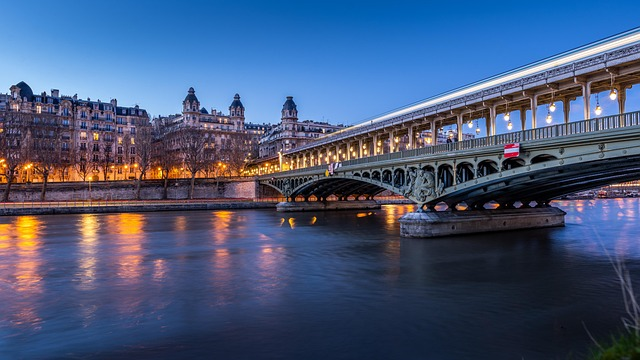
If you don’t mind the crowd, higher prices, and temporary disruptions to the usual tourist life, the 2024 Summer Olympics (Games of the XXXIII Olympiad) will be held in the French capital this year, from July 26 to August 11, 2024.
This translates to increased travel interest, with people eager to experience the host city that’s overseeing the world’s most prestigious sporting event.
The global spotlight is on the City of Lights, resulting in an increased surge in tourist arrivals. The perfect time for the city to show the world its iconic landmarks, cultural tapestry, and modern infrastructure to billions of people.
Alongside the Olympics, there’s also the Paris Plages (urban beaches) and the Festival d’Automne (Autumn Festival).
Paris has improved transportation networks, renovated public spaces, and enhanced accessibility to cater to those who want to witness world-class athletic competitions in iconic Parisian venues.
One of the earmarked venues for the Paris 2024 Olympic Games, the Place de la Concorde is set to host some of the urban sports competitions such as BMX freestyle, skateboarding, and more. The Stade de France for athletics and the Roland Garros stadium for tennis.
10. Douro River, Portugal
The Douro River is the third longest river on the Iberian Peninsula. It flows through both Portugal and Spain and is known for its significant role in the production of Port wine. The river’s course in Portugal, particularly in the Douro Valley, is a UNESCO World Heritage Site.
The River has played a significant role in the history of the region, dating back to the Roman occupation, when it served as an important trading center.
The Douro River is known for its rugged and dramatic landscapes featuring deep river valleys, steep cliffs, and rocky outcrops. It has ways to explore its cultural landscape, whether by road, train, cruise boat, or even by helicopter.
Douro River has long been a destination for wine enthusiasts and those seeking stunning scenery. but in recent years, it’s emerged as a hotspot for a broader range of travelers.
Douro River is an adventure playground. You can hike or bike through rolling vineyards, kayak down the River, or take a hot air balloon ride over its breathtaking landscapes.
The region is famous for its traditional Portuguese dishes, such as açorda (garlic-infused bread soup); bacalhau (salted cod); and local Portuguese stew.
Duoro River’s rugged terrain and cliffs are perfect for rock climbing, ziplining, and other outdoor activities.
11. The Black Sea Coast, Turkey
The Black Sea Coast stretches along the northern edge of Turkey. Its lush green mountains, dramatic coastlines, historical towns, and even its unique tea culture, this diverse and beautiful region is just waiting to be explored.
Its unique flora and fauna, the dense forests, the wild boars and deer in the mountains, the dolphins chasing waves in the Black Sea, are a testament to the richness of the Black Sea Coast.
From white-water rafting on the Çoruh River to paragliding and scuba diving over the Black Sea, the region offers several outdoor activities for adrenaline junkies. Hike through national parks, explore hidden caves, or try mountain biking along its scenic trails.
The Black Sea Coast is also known for its fresh seafood, flavorful Black Sea hazelnuts, and mouthwatering pide (a Turkish flatbread). The region’s unique tea culture, a ritualistic affair with its own special brews and traditional tea gardens, is equally inviting.
The city of Trabzon is one of Turkey’s oldest trade port cities. It’s home to the ancient Silk Road fortress port and the stunning Sumela Monastery, founded by Greeks in the 4th century.
Samsun holds the distinction of being the largest city along the Turkish Black Sea coast. Its opera houses and museums, sports, and recreational activities add to Samsun’s family-friendly atmosphere.
Rize is a city known for its tea plantations and lush landscapes. It’s a popular destination away from the crowds.
The beautiful city of Amasya is known for its riverside Ottoman architecture. It’s home to Hittite ruins and offers a glimpse into the region’s rich historical heritage.
The Greek city of Sinop is an ancient fortified port city jutting out on a peninsula. It is Turkey’s northernmost city and home to the very well-preserved Ottoman old town with a traditional streetscape and whitewashed houses.
Beyond the prominent cities, there’s the hidden gems of Amasra and Gideros.
Amasra, a picturesque Black Sea port town with sandy beaches known for its traditional meze and stunning sunsets.
Gideros is a paradise cove located between Amasra and Inebolu. Gideros offers a timeless photogenic spot for visitors with its natural beauty.
The Black Sea Coast of Turkey is easily accessible by air, sea, and road. Bus and train services connect major cities like Samsun or Trabzon, and can be used to travel between different cities and towns along the Black Sea Coast.
12. South Australia
South Australia is known for its vast plains, low uplands, and well-watered, fertile lands in the southern fringe. Its capital Adelaide, is the most populous city in the state.
South Australia offers more of a beaten-track experience. This means fewer crowds and a chance to see something truly unique.
Lush vineyards, pristine beaches, ancient gorges, and red desert plains packed in a single state make South Australia appealing to adventure seekers, foodies, and culture lovers.
Spend time in South Australia and have a chance to get up close and personal with fascinating creatures. Witness kangaroos hopping on beaches, embark on whale-watching excursions, and experience the only shark cage diving location in Australia.
The surreal landscapes of the Flinders Ranges showcase ancient beauty, rich Aboriginal heritage, breathtaking starry skies, vast gorges, and vibrant wildflowers blooming after rains. Flinders offers opportunities for quad biking, hiking, wildlife encounters, and other outdoor activities.
Coffin Bay National Park’s coastal scenery provides the perfect backdrop for boating, fishing, sailing, scuba diving, and exploring the rugged coastline. The Coffin Bay town is just a short drive from the park.
Barossa Valley is a wine region with rolling hills, charming villages, rows and rows of grapevines, and world-class wineries.
The Eyre Peninsula is known for its jugged coastline, aquatic adventures, and abundance of marine mammals, including sea lions and great white sharks.
New attractions like the Skywalk at Adelaide Oval and the immersive Barossa Valley Way walking trail are being developed to enhance the visitor experience.
South Australia launched a major domestic tourism (Travel our Way) campaign in 2023, highlighting unique experiences like heli-camping and exploring the outback, attracting more domestic travelers.
Compared to other popular tourist destinations in the country, South Australia offers good value for money, particularly in accommodation and dining. Its increased connections from international destinations like Singapore and Hong Kong make it more accessible than ever.
13. Dominica
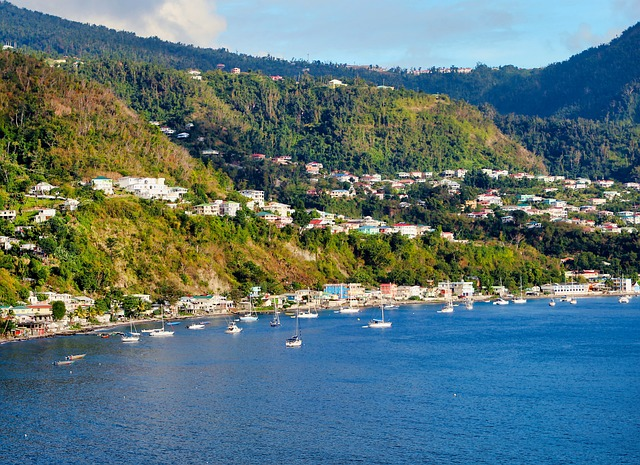
Dominica (aka the Nature Island of the Caribbean), is a beautiful island nation located in the eastern Caribbean Sea. Roseau, its capital city, is known for its historic architecture, colorful markets, and lively cultural scene.
Dominica’s untamed beauty is characterized by lush rainforests, rugged mountains, cascading waterfalls, and boiling springs. Its vibrant coral reefs, shipwrecks, and stunning marine life make Dominica a world-class diving destination.
The country sits on an active volcanic chain. During migration season, humpback whales grace the waters around Dominica, offering amazing opportunities for boat tours and whale sightings.
The Morne Trois Pitons National Park in Dominica is a UNESCO World Heritage Site. The park features lush rainforests, hot springs, and the stunning Boiling Lake. It’s also home to Trafalgar Falls, several creeks, rivers, pools, natural lakes, and various flora and fauna, including the endangered Sisserou Parrot.
Boiling Lake is the world’s second-largest boiling lake, located within the Morne Trois Pitons National Park. Surrounded by the forest greenery and hot streams, Boiling Lake is filled with bubbling grayish-blue water that’s usually enveloped in a cloud of steam, and hissing fumaroles. The hike to Boiling Lake is considered one of the most demanding hikes on the island, taking around 6-8 hours to complete.
Also within the park is the twin waterfall Trafalgar, which has a scenic hiking trail and offers stunning views of the rainforest. The falls are easily accessible via a 10-15 minute walk along a well-maintained path to the viewing platform. You can hike up river stones and streams to the Twin Falls and swim beneath the spray, and lounge in hot and cold pools.
Dominica’s untamed terrain and rainforests provide opportunities for hiking, glamping, nature viewing, and exploring the beauty of the island. Its clear waters and diverse marine life make it an ideal destination for diving and snorkeling enthusiasts.
Visit the Kalinago Barana Auté village and learn about their traditions, culture, crafts, and way of life. They’re the island’s original inhabitants.
Mero Beach is a stunning black sand beach with calm waters. You can kayak or paddleboard for a tranquil exploration of this beach.
Snorkel or scuba dive at Champagne Reef, and witness underwater bubbles emanating from volcanic vents for a unique seascape. Dominica, with its rich natural and cultural offerings, stands out as a captivating Caribbean destination.
14. South Korea
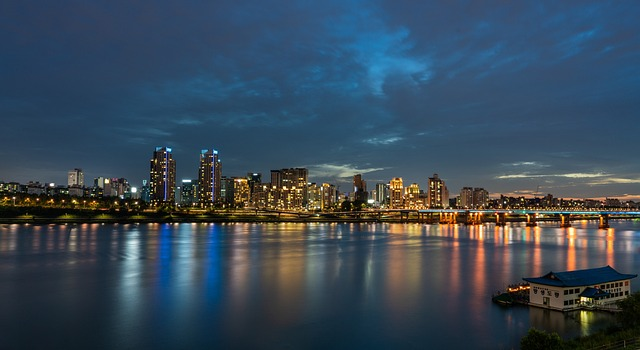
South Korea is a 1,200-km-long peninsula located in East Asia. Its snow-capped mountains, lush national parks, idyllic islands, and vibrant coastlines provide opportunities for skiing in winter, water sports, and spelunking in summer.
The country’s storied past is evident in ancient palaces, temples, and traditional villages. It seamlessly blends historical landmarks with modern skyscrapers and cutting-edge technology – dazzling neon lights in Seoul, futuristic entertainment complexes, serene temple gardens – the contrast is captivating.
The global popularity of K-Pop, K-dramas, and K-beauty continues to draw tourists seeking to experience the authentic culture firsthand. From music concerts and filming locations to trendy fashion and beauty trends, South Korea offers a glimpse into the vibrant world of the Hallyu wave.
South Korea is also leading the trend in affordable yet innovative procedures in cosmetic surgery, cancer treatment, organ transplant, and minimally invasive techniques and rapid recovery times in orthopedic surgery.
It has a strong presence in sports, including baseball, figure skating, field hockey, judo, shooting, table tennis, taekwondo, wrestling, weightlifting, and more. Sokor has hosted significant global events like the 1988 Summer Olympics and the 2018 Winter Olympics.
South Korea is a tech-savvy nation known for its advanced technology and digital infrastructure. It has one of the one of the world’s fastest and most widely available Wi-Fi networks. It offers good value for money, making it an attractive option for budget-conscious travelers.
South Korea is generally considered safe, with low crime rates and a well-developed infrastructure for emergency services. However, you still have to exercise normal safety precautions and be aware of your surroundings, as you would in any other country.
15. Rajasthan, India
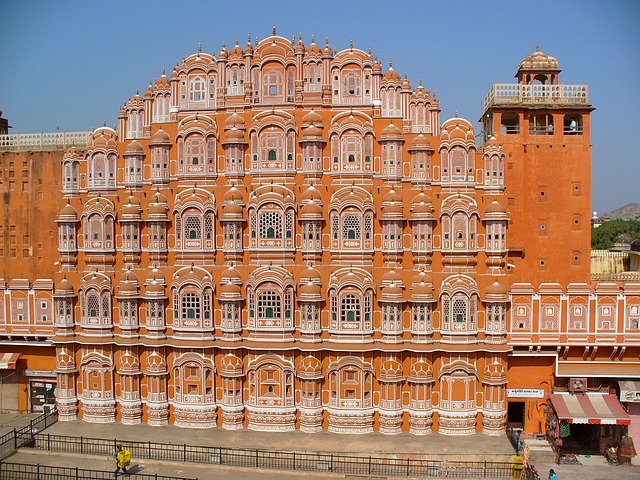 Rajasthan (aka the Land of Kings) is a state in northern India that promises an unforgettable journey through culture, history, and vibrant landscapes.
Rajasthan (aka the Land of Kings) is a state in northern India that promises an unforgettable journey through culture, history, and vibrant landscapes.
Rajasthan is home to impressive forts, palaces, and architectural marvels. From the towering Mehrangarh Fort in Jodhpur to the elegant City Palace in Jaipur, these structures tell stories of Rajput valor and royalty.
Jodhpur is the administrative capital of Rajasthan. Its thriving cities Jaipur (aka the Pink City) is a shopper’s paradise. Udaipur (aka the City of Lakes) is famous for its romantic boat rides on Lake Pichola. Pushkar, a holy town, attracts pilgrims with its camel fair and ancient temples.
Rajasthan is famous for its artistic traditions, boasting a rich legacy of handicrafts – miniature painting, block printing, marble inlay work, tie and dye, puppets, blue pottery, wood carving, and jewelry. It’s also known for its colorful hand-woven fabrics, and intricate embroidery work.
The Thar Desert can be explored by camel safari or jeep rides. It’s one of the largest deserts in India, known for its sand dunes, vibrant sunsets, and nomadic culture.
Rajasthani cuisine is famous for its various spices, sweetness, and signature dishes such as dal bati churma, kachori, samosas, pakoras, and jalebis, and ghevar.
Ranthambore National Park is home to leopards, sloth bears, several deer species like chital (spotted deer), marsh crocodile, palm civet, jackal, desert fox, serpent eagle, waterfowl, other mammals, reptiles, and bird species.
Keoladeo Ghana National Park is a wildlife sanctuary and a UNESCO World Heritage Site in eastern Rajasthan. It’s home to over 300 species of permanent and migratory birds, making it one of the world’s most important bird breeding and feeding grounds.
Rajasthan’s distinct culture is shaped by a large number of people from different backgrounds, speaking over 11 commonly spoken languages and practicing various religions. Although Hinduism is the majority religion, Islam, Jainism, Buddhism, and Sikhism are also practiced.
16. Texas Hill Country, Texas, USA
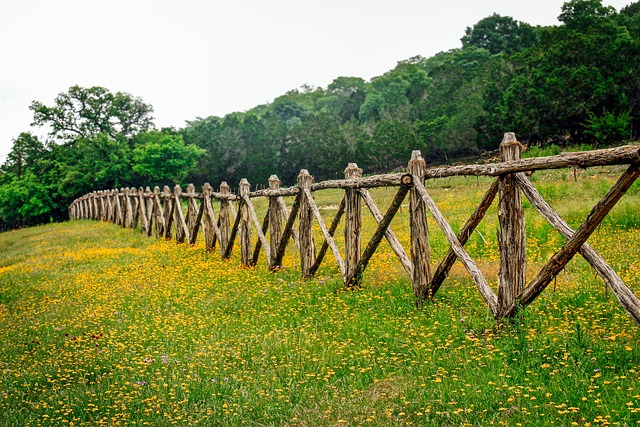
The Texas Hill Country is a geographic region of Central and South Texas, known for its diverse wildlife, rolling hills, grasslands, rivers, dramatic rock formations, and hidden underground lakes. It’s a nice travel destination for adventure activities such as hiking, biking, kayaking, swimming, and rock climbing.
It’s home to several endangered species, including the Texas blind salamander, the black-capped vireo (bird), the tooth cave spider, to name a few.
The hill country has award-winning wineries nestled amidst its rolling hills. These provide exquisite wines and vineyard tours.
Its rich cultural heritage is a blend of German and Texan influences, offering authentic experiences like live music, festivals, and traditional cuisine.
Its historic towns (Fredericksburg, Gruene, Wimberley, and Marble Falls) offer a mix of natural attractions, historic architecture, cultural experiences, local shops and art galleries – making them popular attractions for visitors seeking a taste of Texas history and the charm of the Texas Hill Country.
The highly anticipated April 8th total solar eclipse will attract stargazers and astronomy enthusiasts, putting the Hill Country in the spotlight.
New developments in infrastructure in the year ahead are underway – expanded highways and airports make the region more accessible, opening it up to more travelers.
Pleasant temperatures year-round offer escapes from extreme weather in other regions. Springtime reveals stunning wildflower displays, attracting nature lovers and photographers alike.
17. New York State, USA
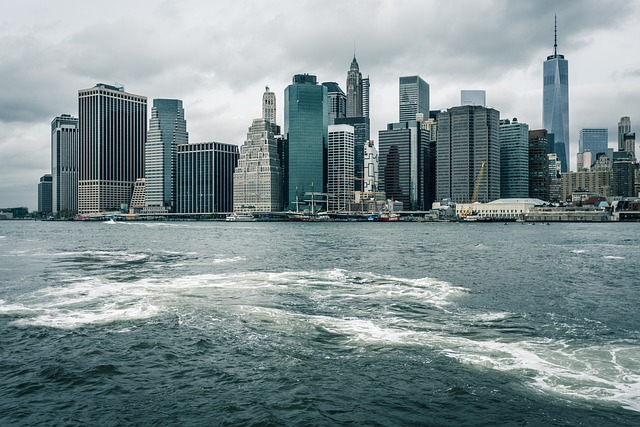
New York State is on the east coast of the United States, with Albany as its capital. It’s the proud home of over 240 public and private colleges and universities, including the State University of New York, Columbia University, Cornell University, NYU, and Fordham University. All are recognized institutions for academic excellence, where future wise men and women, and emerging artists are honed.
New York City, the state’s largest city, is the country’s leading financial, cultural, and commercial center. Known for its multiple population, NYC has more than 800 spoken languages. The Empire State Building, the Chrysler Building, and the Statue of Liberty are some of its most famous landmarks.
While New York State may not have the sheer abundance of international events like NYC, there are actually some unique and exciting happenings in the state this year.
The Cooperstown Dreams Park National Baseball Tournament takes place this June-August. Talented young baseball players from around the world compete in this prestigious tournament.
The Saratoga Springs Jazz & Blues Festival this September 20-29 features an impressive lineup of international jazz and blues artists.
The Niagara Falls Winter Festival of Lights (November 23-February 25) is a spectacle of millions of twinkling lights illuminating the iconic falls and surrounding area. This draws in tens of thousands of spectators from all over the world.
New York State’s agricultural and diversified culinary scene focus on local produce, sustainable practices, and unique culinary offerings such as the buffalo wings and Michigan red hots.
The state also offers unique outdoor activities such as rock climbing in the Shawangunks Ridge, caving or stargazing in the Adirondack Mountains, in the darkest skies of the northeast coast of the United States.
18. San Diego County, California
San Diego County is located in southwestern California. It’s known for its idyllic climate, 70 miles of pristine beaches, and a dazzling array of world-class family attractions.
Some popular attractions in the county include the world-famous San Diego Zoo and San Diego Zoo Safari Park, SeaWorld San Diego, LEGOLAND California, and the Anza-Borrego Desert State Park. The county is also home to numerous cultural attractions, such as museums, galleries, and performing arts venues.
The county’s population is a blend of Hispanic and non-Hispanic white and Asian. The influence of American and Mexican cultures is particularly strong due to its position as a border town and its large Hispanic population.
Nestled in the Cuyamaca Mountains, Julian is a charming old town with a charming picturesque setting. It’s known for its apple orchards, quaint shops, wineries, historic buildings, etc. Horseback riding, hiking, wine tasting, lakeside camping are just some of the activities it offers.
Step back in time to the days of the Old West in Ramona, a rural old town known for its ranching heritage and scenic beauty. A surprise trip to the Ramona Pioneer Museum will teach you about the town’s history.
Or the remote villages of Campo, a secluded mountain village nestled in the eastern hills of San Diego County; and Pine Valley, a rustic village located in the Laguna Mountains, where you can bike or hike through its scenic trails.
19. Mérida, Mexico
Mérida is the capital of Yucatán. It’s the largest city in southeastern Mexico. Founded in 1542, Mérida is known for its well-preserved colonial architecture, Mayan ruins, and vibrant art. Here are some places of interest you can visit in Mérida:
- The Mayan World Museum of Mérida showcases the rich cultural heritage of the Mayan civilization.
- Paseo de Montejo is a grand boulevard lined with impressive mansions, ideal for leisurely strolls and sightseeing.
- Plaza Grande is a picturesque plaza flanked by pastel-colored buildings and the historic city cathedral. It offers a great spot to relax and soak in the local atmosphere.
- The beautiful Cathedral de Mérida in Plaza Grande offers a glimpse into the city’s religious and architectural history.
- Dzibilchaltun is an important Mayan archaeological site, dating back to 1500 BC, with over 8,400 structures to explore.
- Casa de los Montejo is a historic mansion and museum that provides insight into the colonial history of the region.
- Mérida is only 62 kilometers away from the Unesco world heritage site of Uxmal, which is recognized for its impressive Mayan architecture and cultural significance.
Mérida is a convenient base for day trips to nearby Mayan ruins, cenotes, and sunny beaches. It also hosts numerous festivals and events throughout the year, including the Feria Internacional de la Lectura Yucatán, an annual book fair that takes place in March, 2024. And the Festival de Jazz Resonancias (Yucatán Jazz Festival) on November 22-24, 2024.
20. Tasso, Sierra Leone
Tasso Island has been recognized as one of top travel destinations for 2024. The island is 23.3 km away, an hour and 25 min ferry ride from Freetown, the capital city. It’s a 2560-acre island with stunning natural beauty.
Its pristine beaches with calm waters perfect for swimming, sunbathing, and snorkeling. Turtle Island Beach is particularly popular for its clear waters and vibrant marine life.
Tasso’s coastline can be explored by kayak or boat to discover hidden coves and other nearby islands. You might even spot dolphins or humpback whales during their migration season.
You can hike through the rainforest trails, and enjoy the serenity of the unspoiled island environment. The island is a haven for birdlife (parrots, hornbills, mangrove herons, etc.).
The Tasso Ecotourism Project is a non-profit, community-based initiative located on Tasso. It provides accommodation and services for both international tourists and local visitors, and aims to bring new jobs and livelihoods to the 5,000 islanders and promote sustainable tourism in the region.
The project offers historic tours to the Bunce Slave Fortress National Monument and Pollumant, hiking trails, and canoe trips through the Tasso Mangrove Forests. Visitors can also enjoy nature viewing and birdwatching tours, snorkeling, and swimming on the beach closest to the camp.
21. Andrefana Dry Forests, Madagascar
The Andrefana Dry Forests are a remarkable network of six protected areas on the western coast of Madagascar (formerly the Isle of St. Lawrence). Andrefana is a serial property encompassing 6 protected areas, making it one of the 3 UNESCO World Heritage Sites in Madagascar. The forests are recognized for their unique biodiversity and exceptional natural beauty.
Andrefana’s diverse habitats include, as it’s called, dry forests, spiny thickets, limestone tsingy formations, and mangroves. It boasts various ecosystems rich in endemic plants and animals.
The geological wonder Tsingy de Bemaraha Strict Nature Reserve features dramatic limestone pinnacles and canyons, sculpted by erosion over millions of years.
Andrefana comprises karstic landscapes and limestone uplands cut into impressive ‘tsingy’ peaks, offering opportunities for hiking and exploring the unique rock formations.
It’s home to several endemic species of fauna and fauna, including the famous Verreaux’s Sifaka and Decken’s Sifaka lemur, rare and endangered birds, the elusive Aye-aye primate, and 7 unique species of baobab trees. Visitors can engage in wildlife and bird watching activities to observe the animals inhabiting the area.
Andrefana offers cultural and adventure tours that impart learnings about the local culture and history. Local communities have traditional practices closely intertwined with Andrefana, demonstrating a harmonious relationship with nature.
It’s a destination for cave explorers and enthusiasts to discover new cavities and explore the underground landscapes. To say that Andrefana is a little wonder is an understatement.
22. Amboseli National Park, Kenya
Amboseli National Park is a wildlife reserve located in southern Kenya. It offers various habitats, including dried-up lake beds, wetlands with sulfur springs, savannah, and woodlands, making it a diverse and unique destination for nature lovers.
The Observation Hill is a picnic site located in the park, offering an aerial view of the large elephant herds and a clear picture of Mount Kilimanjaro.
The park offers hot air balloon safaris, a unique way to experience the park and its surroundings, offering breathtaking views of the landscape and wildlife.
It also offers exceptional birding opportunities. Sinet Delta is a region within the park that’s dominated by birdlife, hosting over 400 bird species, including waterfowl like pelicans and Egyptian geese found in the swamps.
Lake Amboseli is a great source of water for the wildlife in the park, offering boat cruises and great game viewing opportunities.
Visitors can explore the park on foot to experience the different habitats and watch elephants, lions, leopards, buffaloes, giraffes, and other lesser-known but fascinating creatures like cheetahs, black rhinos, and gerenuk antelope up close, with the majestic, snow-capped peak of Mount Kilimanjaro as a backdrop.
Opportunities to interact with the Maasai people, learn about their traditions, and even visit their villages add a unique cultural dimension to your safari experience.
Several conservation efforts are underway. The Maasai Wilderness Conservation Trust, among other organizations, aims to protect the ecosystem and promote sustainable livelihoods for local communities, as the park faces challenges such as poaching, habitat loss, and human-wildlife conflicts.
Community-owned conservancies and responsible safari tour operators are getting popular. Innovative technologies like drone photography and virtual reality are being used to offer unique perspectives and educational experiences.
Improved flight connections, competitive safari packages, ongoing improvements of roads and tourism facilities, make exploring Amboseli more comfortable and accessible than ever, particularly for budget-conscious travelers.
Biggest Travel Trends for 2024
Peak season gets the cold shoulder
The increase in shoulder season trips, especially in popular European cities, is projected in 2024. According to the Association of British Travel Agents (ABTA), May and June could become the preferred months for travel this year.
Travel professionals and holiday package tours will become more popular this year as value-conscious travelers seek expert guidance for their international escapes. 40% of travelers opt for all-inclusive packages.
Plan-free travel
A plan-free travel is all about embracing the unknown and exploring at your own pace. It’s an exciting way to see the world through a different lens.
It’s saying no to endless scrolling to plan a strict travel itinerary and instead saying yes to spontaneity. Plan-free travels will move further this 2024.
According to a survey of 27,000 travelers in 33 countries by Booking.com, 52% of those surveyed said they’re “keen to book a surprise trip where everything down to the destination is unknown until arrival”.
It allows you to adapt, improvise, and navigate new discoveries and unforeseen circumstances, thereby improving your problem-solving skills – where you’re more likely to discover hidden gems and local interactions you wouldn’t find in travel guidebooks.
Train stations are the new food destinations
Train stations are designed for commuter stays to hang out with other travelers. In a world of increased travel delays, train stations are getting filled with shops, restaurants and bars.
Train station operators recognize the demand for high-quality dining options. Hence, the rise of local and gourmet food offerings, replacing generic fast food chains. This attracts discerning travelers and locals alike, making the station a culinary discovery hub.
More train stations will be redesigned to add customized food and beverage services. This trend is likely to continue, making train stations not just a place to catch a train, but a place to embark on a delicious culinary adventure.
Astro tourism
Astro tourism is expected to be a leading travel trend in 2024. It involves travel that takes people to some remote locations to experience unique astronomical phenomena like partying under the stars, watching meteor showers, aurora borealis hunting, and other fascinating events and activities.
The rise of astro-tourism is fueled by a growing sense of cosmic wonder and technological advancements. It holds a promising future with potential impacts on various aspects of travel and society.
It involves stargazing and visiting facilities related to astronomy, such as observatories and heritage sites related to astronomy.
What was travel like a decade ago?
Smartphones weren’t as common or advanced as they are now. Navigation relied heavily on paper maps and travel guidebooks, with limited real-time options.
Limited WiFi availability meant relying on roaming for internet access, which was expensive. Social media sharing from the road was less frequent and spontaneous.
Travel was cheaper, and the overall travel pace was slower. Airlines offered fewer direct flights. Visa requirements for some countries were stricter, requiring more application steps and documentation.
Popular sun-soaked destinations such as Spain and Greece became sought-after locations for European travelers. American travelers, on the other hand, flocked to beach getaways in the Caribbean and Mexico.
Popular attractions weren’t as jam-packed, as tourism wasn’t as widely spread.
What will travel be like in the next two decades?
Self-driving cars and flying taxis could become commonplace, offering personalized and convenient transportation within cities and regions.
Electric and hydrogen-powered planes, trains, and ships will likely dominate, as the focus shifts towards reducing travel’s carbon footprint.
More adventurous travelers might be able to afford and experience the thrill of space travel, with private companies offering suborbital flights and even lunar getaways.
AI-powered travel assistants will be curating personalized itineraries, and planning your next trip could involve virtually exploring destinations, hotels, and activities before you even book, giving you a more realistic sense of the experience.
Secure and transparent booking platforms based on blockchain technology could streamline the travel process and eliminate third-party intermediaries.
Conclusion:
The above-mentioned places represent the 22 emerging tourist hotspots in 2024. Each promises unique experiences and captivating adventures for those who seek new horizons. From the medieval spirit of Tartu, the untamed landscapes of South Australia, the otherworldly beauty of the Andrefana Dry Forests to the fascinating wildlife of Amboseli National Park in Kenya, these hotspots showcase the evolving trends of global travel, inviting enthusiasts to embark on unforgettable journeys in the year ahead.
FAQs:
1. What’s the latest trend in adventure tourism?
In its latest Holiday Habits Report (October 31, 2023), ABTA (Association of British Travel Agents) reveals a cost-driven shift in travel plans for 2024. With 72% of respondents getting impacted by rising living costs, off-season travel becomes a more practical option.
2. What is the future of travel and tourism?
Short, local getaways (micro trips) within easy reach of home will become popular, allowing people to escape the daily grind without major commitments. Urban destinations will integrate technology (AI and VR), to make travel more seamless and efficient, with features like contactless check-in, smart luggage tracking, VR travel, and real-time travel information.
3. Where is tourism booming?
Rio de Janeiro, Brazil is gearing up for Carnival in February, with hotels and flights already filling up. Safaris and wildlife viewing in Kenya and Tanzania continue to be a major draw for visitors to Africa.
4. What’s the best city to visit in 2024?
Tartu, Estonia. This city is one of the European Capitals of Culture for 2024, sharing the title with Bad Ischl (Austria) and Bodø (Norway). Tartu’s 13th-century cobbled Town Hall Square is filled with historical buildings and cafes, making it a beautiful and popular spot for visitors.
5. Where does the Eastern Oriental Express go?
The train Eastern & Oriental Express travels from Singapore to Bangkok, with stops in Kuala Lumpur, Penang, and Kanchanaburi. It’s a 4-day luxury train journey with amazing food and excursions around Southeast Asia.

